Put the comma after date or before a date? When to comma and when not to comma? That is the question! The most frequently used and abused punctuation mark in English writing: the comma.
The question being tackled is, ‘what’s the correct way to punctuate dates?‘ Also, where should the comma go in a date?
To learn all about the correct usage of commas in dates, keep reading!
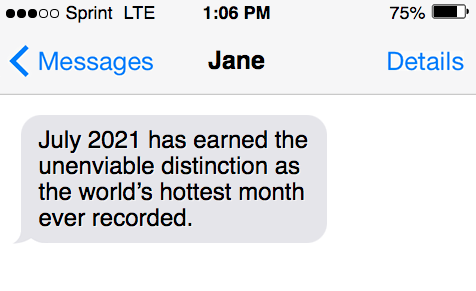
Back to the basics
The comma is the trendiest punctuation mark that is regularly misused in writing. It is extremely common to see mistakes with commas, and that’s because commas have many applications in writing, and is a hugely versatile tool of punctuation.
The presence or absence of commas has the potential to completely change, modify, shape and eradicate the meaning of sentences in one fell swoop. In fact, the missing Oxford comma in a state’s legislation cost a commercial dairy company $5 million dollars once. It’s a true story.
Let’s refresh, what do commas do, again?
Remember, grammar is hard, and there are no dumb questions!
Broadly speaking, commas help make writing digestible and readable for the reader. This is the case whether what’s written is spoken aloud or read independently, in someone’s head. Commas signify a brief pause for the reader, commas are also used to separate elements of a sentence and items in a list or series.
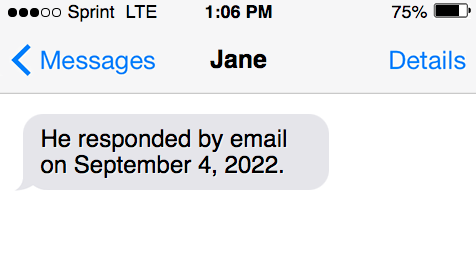
Besides its grammatical applications, commas are also an important punctuation in terms of mechanical and stylistic writing. Stylistic writing concerns punctuation and the formatting of writing, and has less to do with grammar functions, such as the syntax and sentence structure.
When talking about how to use commas properly in dates, this is less a matter of grammar, and more with the formatting and style of dates. There are various ways to correctly write the date; however, as will be explained below, this hinges on the format being used.
What’s the correct way to write dates with commas?
Answer: it depends on where you’re from.
The proper punctuation for dates depends first on whether the date is written in the American English format or British English.
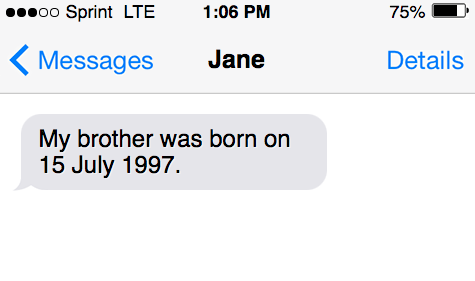
American English date format
American English writes the date using the month–date–year format.
This way of uses a comma after the date, but does not include a comma after the month or the year.
See how the following correct and incorrect writing of the date as an example:



Note how commas areonly used after the date according to this date style. In other words, there is no comma included after the month or the year with the date month year format.
Whenonly the month and the year are written, no commas are needed whatsoever.
See these correct and incorrect examples of dates written with only the month and year:

- July 2021 has earned the unenviable distinction as the world’s hottest month ever recorded.
- August 2022 was the world’s sixth-warmest August in 143 years.
- May 2022 was warm and wet across the United States.

As shown above, when just the two elements of the date, the month and year, are included, no comma is needed whatsoever.
These stats are pulled from www.noaa.gov.
What about when the date includes weekdays?
When dates are written including the day of the week in addition to the month and the year, the same rules as before applies, except that an additional comma is included after the weekday.
This is the one difference: the comma is used after the weekday, along with after the date of the month.
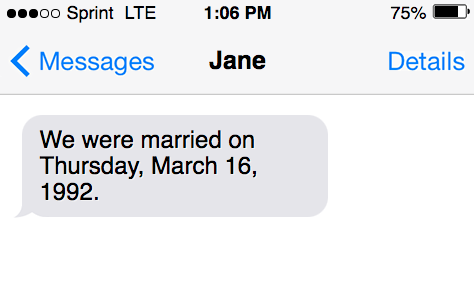
See the following Date examples:
 Correct: We were married on Thursday, March 16, 1992.
Correct: We were married on Thursday, March 16, 1992.


British English date format
British English writes inverted style dates compared to the American version, and uses the day-month-year format instead.
Therefore, the proper way to write dates according to the British style is to write the date first, followed by the month and the year.
This format of writing dates does not use a comma.
See the following examples of dates written in the inverted style:



It appears strange without the comma; however, this is the correct way for writing dates that the majority of country’s use, (except for the US, Canada, and numerous other places.)
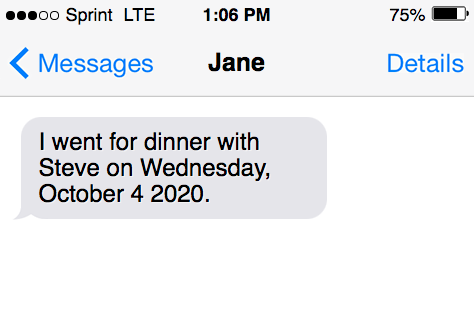
In general, when is it correct to include commas in dates?
With inverted dates, include commas when the weekday is also part of the date.
See the following example:




Ordinal number vs cardinal number
The English language is peculiar because the way we speak or read the date is different from how we write the date.
In speech or conversation, it’s common practice to use an ordinal number to refer to the day of the month. Ordinal numbers refer to a rank or position in a series: first, second, third, fourth.
Ordinal numbers stand out in writing because they include the suffixes: –nd, –rd, –th, –st.
Example: Sarah said her recital is on the fourth of July.
Example: Ashley said her exam is scheduled for the 15th of April.
While it is correct to read and speak the date using ordinal numbers, the proper way to write the date is in cardinal numbers.
Cardinal numbers communicate the amount or quantity of some item or thing, and are more common in writing: one, two, three, four, five.
It’s a frequently occurring mistake in English writing to express dates using the ordinal format.
For example:


To be clear, it is correct to pronounce the date like ‘fifteenth,’ ‘second,’ ‘first,’ but in writing, and especially in formal writing, it’s best to avoid this method, and simply stick to the
How to write the date at the beginning of a sentence
If the date is written at the beginning of a sentence, include a comma after the year.
Apart from this, it is the same as the month date year format, where the comma goes after the date, (and not the month or year.)
How to write the date in the middle of a sentence
When dates are written in the middle of a sentence, the correct comma placement depends yet again on the date format, and which elements of the date are included in the sentence.
As a general rule, to write a date in the middle of a sentence, include a serial comma (i.e., final comma or Oxford comma,) both before and after the year:
Example: Stan’s arrival on Saturday, January 11, 1988, was a huge relief for the whole family.
When a date appears in the middle of a sentence with only the month and year, (or two elements of a date, e.g., February 2019) a comma is not necessary before or after the date.
Bonus fact!
The International Organization for Standardization, (ISO) is an institution that determines writing conventions for the exchange of times and dates worldwide.
The ISO work to neutralize each country’s unique writing conventions for times and dates, and introduces a global standard for writing dates so it will be communicable to people from each country:
“[the ISO] provides a well-defined, unambiguous method of representing calendar dates and times in worldwide communications, especially to avoid misinterpreting numeric dates and times when such data is transferred between countries with different conventions for writing numeric dates and times.”—ISO,Wikipedia.
The ISO introduced the international convention of writing the date as YYYY-MM-DD. This is known as the ISO 8601 notation, and is commonly recommended as a standard for writing dates.
Many countries have since implemented the ISO 18601 notation as their country’s official date format.
What about special dates? (like holidays?)
Special dates are treated the same as any other date and follows the same comma usage.
We celebrate Christmas on December 25 of each year.
Read up on other articles!
Need help deciding the next article to read? We made it easy for you.
Read our grammar guides on:
- The differences between ok vs okay?
- Fullproof, full proof or fullproof?
- Is it beckon call or beck and call?
Learn the difference, and master the art of English prose.
Learning correct English grammar is hard. That’s why we’ve written tons of articles helping blooming writers communicate better through words. Let’s get textual, and continue to excel in our use of the written word.
In Review
- The American format for dates is: month–date–year. The month day year format includes a comma after the date, but not the month or the year.
- Britain and most other parts of the world embrace a different approach, and write dates using an inverted style. This puts the day of the week first, followed by the month and year, and omits the comma entirely.
Glossary
- Ordinal numbers: wikipedia.org/wiki/Ordinal_number
- Cardinal numbers: wikipedia.org/wiki/Cardinal_number
- American date format: editorsmanual.com/articles/dates
- British date format: thepunctuationguide.com/comma.html
Sources
- Above stats are from: www.noaa.gov.
- Splashlearn.com/math-vocabulary/number-sense/ordinal-numbers
- ISO 18601 notation
Inside this article
Fact checked:
Content is rigorously reviewed by a team of qualified and experienced fact checkers. Fact checkers review articles for factual accuracy, relevance, and timeliness. Learn more.
Core lessons
Glossary
- Abstract Noun
- Accusative Case
- Anecdote
- Antonym
- Active Sentence
- Adverb
- Adjective
- Allegory
- Alliteration
- Adjective Clause
- Adjective Phrase
- Ampersand
- Anastrophe
- Adverbial Clause
- Appositive Phrase
- Clause
- Compound Adjective
- Complex Sentence
- Compound Words
- Compound Predicate
- Common Noun
- Comparative Adjective
- Comparative and Superlative
- Compound Noun
- Compound Subject
- Compound Sentence
- Copular Verb
- Collective Noun
- Colloquialism
- Conciseness
- Consonance
- Conditional
- Concrete Noun
- Conjunction
- Conjugation
- Conditional Sentence
- Comma Splice
- Correlative Conjunction
- Coordinating Conjunction
- Coordinate Adjective
- Cumulative Adjective
- Dative Case
- Determiner
- Declarative Sentence
- Declarative Statement
- Direct Object Pronoun
- Direct Object
- Diction
- Diphthong
- Dangling Modifier
- Demonstrative Pronoun
- Demonstrative Adjective
- Direct Characterization
- Definite Article
- Doublespeak
- False Dilemma Fallacy
- Future Perfect Progressive
- Future Simple
- Future Perfect Continuous
- Future Perfect
- First Conditional
- Irregular Adjective
- Irregular Verb
- Imperative Sentence
- Indefinite Article
- Intransitive Verb
- Introductory Phrase
- Indefinite Pronoun
- Indirect Characterization
- Interrogative Sentence
- Intensive Pronoun
- Inanimate Object
- Indefinite Tense
- Infinitive Phrase
- Interjection
- Intensifier
- Infinitive
- Indicative Mood
- Participle
- Parallelism
- Prepositional Phrase
- Past Simple Tense
- Past Continuous Tense
- Past Perfect Tense
- Past Progressive Tense
- Present Simple Tense
- Present Perfect Tense
- Personal Pronoun
- Personification
- Persuasive Writing
- Parallel Structure
- Phrasal Verb
- Predicate Adjective
- Predicate Nominative
- Phonetic Language
- Plural Noun
- Punctuation
- Punctuation Marks
- Preposition
- Preposition of Place
- Parts of Speech
- Possessive Adjective
- Possessive Determiner
- Possessive Case
- Possessive Noun
- Proper Adjective
- Proper Noun
- Present Participle
- Prefix
- Predicate



